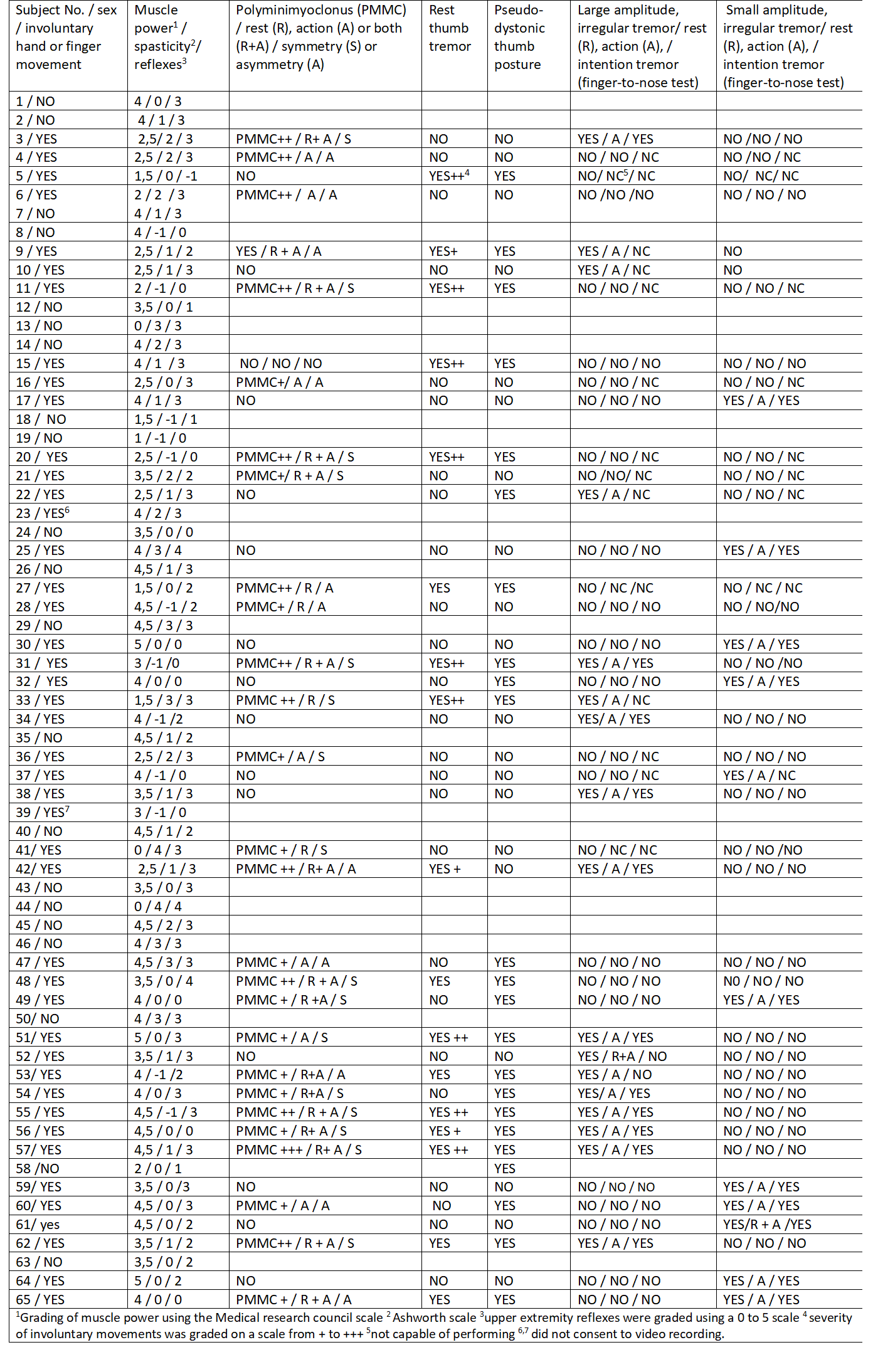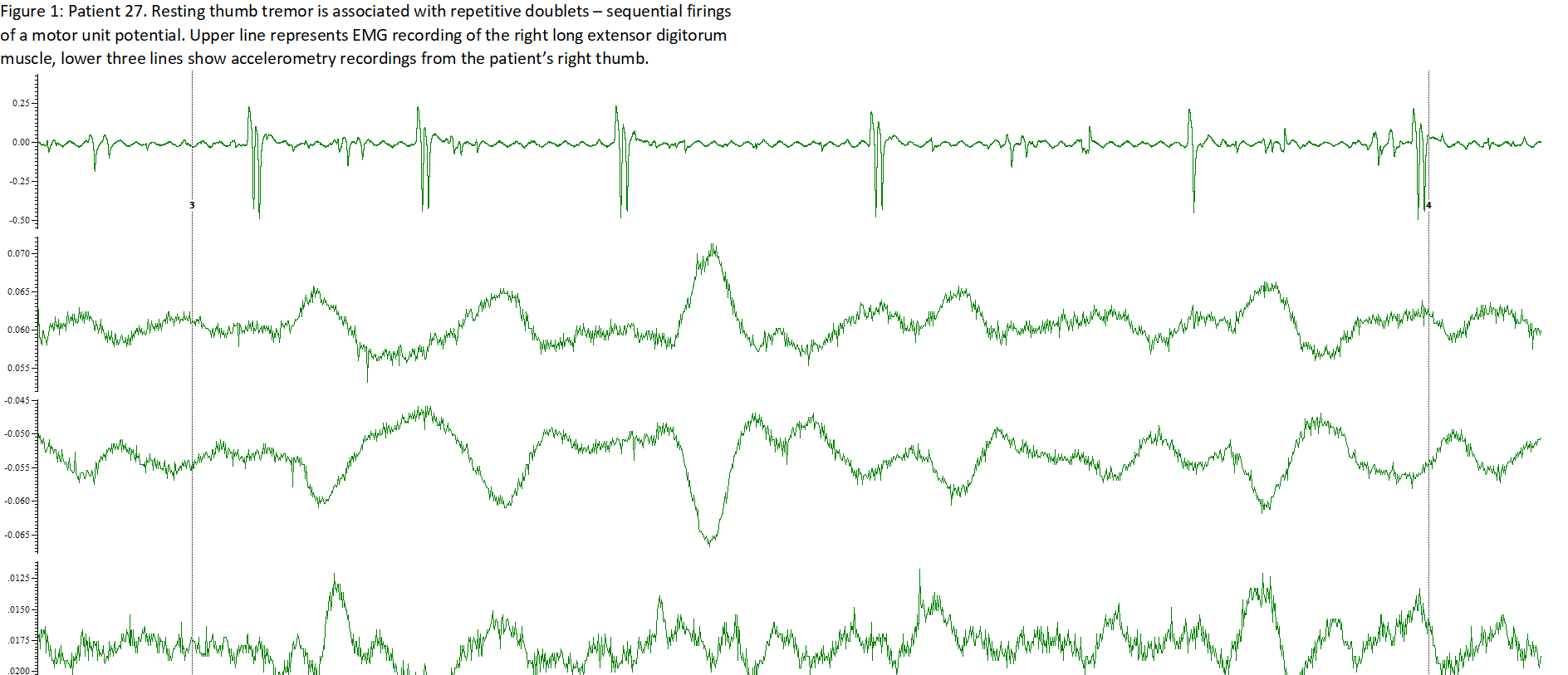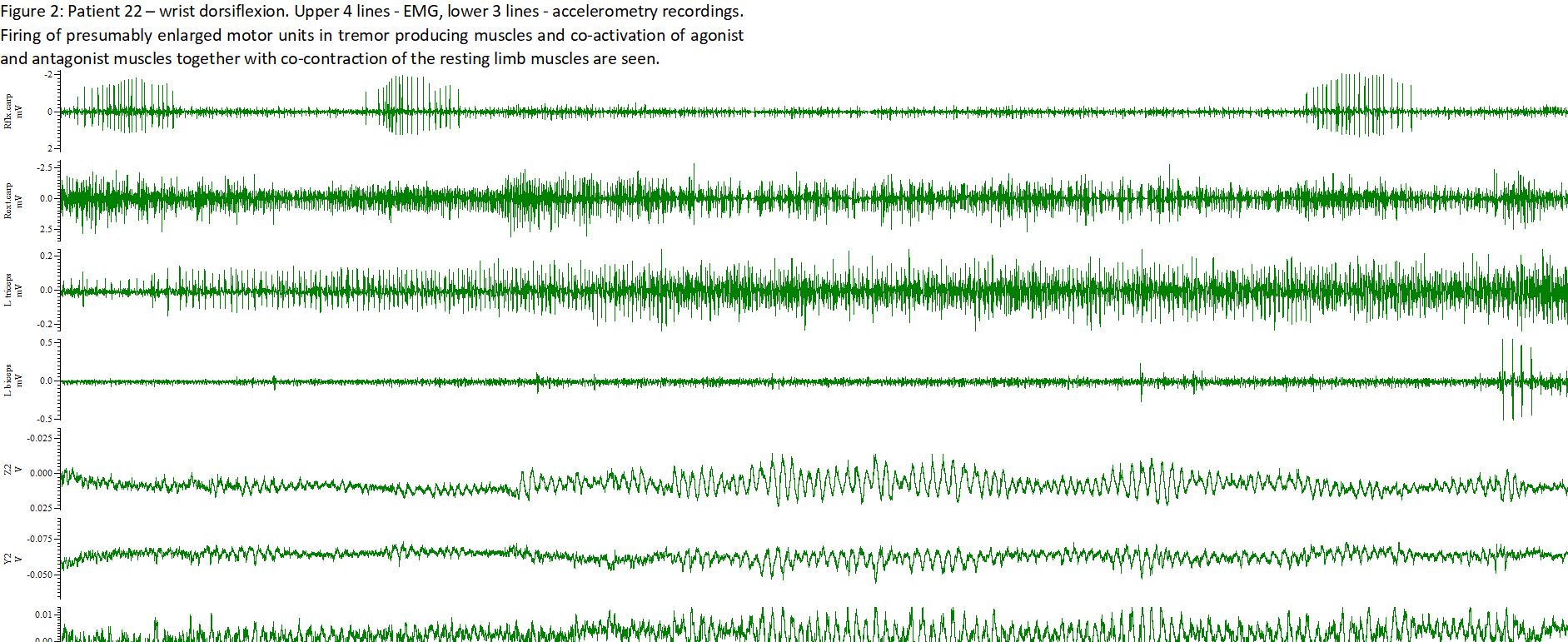Session Information
Date: Sunday, October 7, 2018
Session Title: Tremor
Session Time: 1:45pm-3:15pm
Location: Hall 3FG
Objective: To describe prevalence, clinical characteristics and electrophysiological findings of involuntary movements in patients with motor neuron disease (MND).
Background: Involuntary movements are not considered typical finding in MND. However, we have frequently observed involuntary jerks in patients with otherwise typical MND.
Methods: Sixty-five consecutive patients followed in MND outpatient clinic were clinically examined by movement disorders experts and video-recorded. The presence and quality of involuntary movements was noted and severity was graded on a scale from + to +++. Movements were further classified in one of the following: minipolymiyoclonus, thumb rest tremor, large amplitude irregular hand tremor and regular small amplitude hand tremor. In proportion of patients, surface poly-electromyography (EMG) and accelerometry were performed.
Results: 44/65 patients had involuntary movements. 27 had non-rhythmical, small amplitude, random finger jerks present at rest and/or activation, suggestive of minipolymyoclonus. Tremor, defined as rhythmic, oscillation of a body part, was noted in 34 patients. Action hand tremor was big amplitude and irregular in 17 patients, while 11 patients had more regular and smaller amplitude tremor. All except one tremor patient able to perform finger to nose test also had intention tremor component. (Table 1). 17 patients had thumb rest tremor, almost always associated with pseudo-dystonic thumb posture (16/17). Accelerometry confirmed the presence of tremor with frequencies ranging from 4 – 7.5 Hz. Poly EMG showed that patients were almost never in a state of complete relaxation. Tremor and minipolymyoclonus were commonly associated with firing of enlarged motor units (MU) (Figure 1 and 2).
Conclusions: Contrary to widespread belief, involuntary movements are present in the majority of patients with MND. Based on the analysis of EMG and accelerometry recording, we hypothesize that pseudodystonic thumb posture, thumb “rest” tremor, minipolymiyoclonus and irregular large-amplitude tremor are part of the same spectrum of involuntary movements. These arise from incomplete muscle relaxation at rest and firing of enlarged MUs on the background of reduced recruitment pattern on attempted activation. Regular lower amplitude tremor is probably of central origin.
References: 1. Bhat, S., Ma, W., Kozochonok, E. & Chokroverty, S. Fasciculations masquerading as minipolymyoclonus in bulbospinal muscular atrophy. Ann. Indian Acad. Neurol. 18, 249–251 (2015). 2. Spiro, A. J. Minipolymyoclonus. Neurology 20, 1124 (1970). 3. Tremor & Essential Tremor. Available at: https://www.movementdisorders.org/MDS/About/Movement-Disorder-Overviews/Tremor–Essential-Tremor.htm. (Accessed: 8th January 2018). 4. Mills, K. R. The basics of electromyography. J. Neurol. Neurosurg. Psychiatry 76, ii32-ii35 (2005). 5. de Carvalho, M., Eisen, A., Krieger, C. & Swash, M. Motoneuron firing in amyotrophic lateral sclerosis (ALS). Front. Hum. Neurosci. 8, (2014).
To cite this abstract in AMA style:
K. Vogelnik, L. Dolenc Grošelj, B. Koritnik, L. Leonardis, J. Zidar, M. Kojović. The spectrum of involuntary movements in patients with motor neuron disease – a cross-sectional study [abstract]. Mov Disord. 2018; 33 (suppl 2). https://www.mdsabstracts.org/abstract/the-spectrum-of-involuntary-movements-in-patients-with-motor-neuron-disease-a-cross-sectional-study/. Accessed December 20, 2025.« Back to 2018 International Congress
MDS Abstracts - https://www.mdsabstracts.org/abstract/the-spectrum-of-involuntary-movements-in-patients-with-motor-neuron-disease-a-cross-sectional-study/



